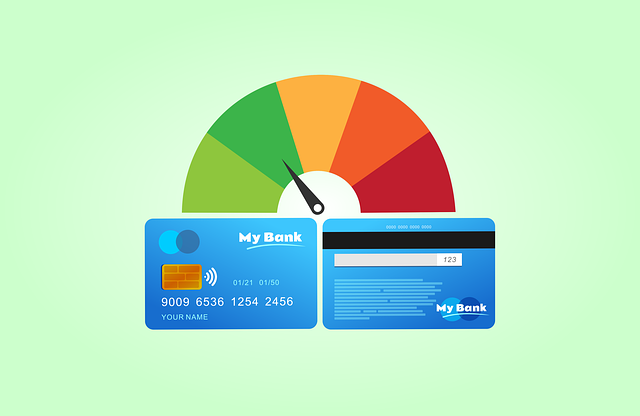What is Afterpay?

Afterpay is a popular buy now, pay later (BNPL) service that allows customers to split the purchase price of goods or services into future payments on their credit or debit card. Merchants can integrate Afterpay into their online or in-store checkout process, allowing customers to pay for their purchases over time.
Merchants benefit from Afterpay by attracting a wider demographic of customers who prefer to spread out their payments. By offering Afterpay, merchants can increase their average order value and conversion rates. The Afterpay app allows customers to easily manage their payments, view their purchase history, and keep track of upcoming due dates.
One advantage for merchants is receiving the full purchase amount upfront from Afterpay, minus a small fee. This helps improve cash flow and reduces the risk of late or missed payments. Merchants can access detailed insights and analytics on customer behavior and trends through the merchant portal.
How does Afterpay work?

Afterpay allows customers to buy products and pay for them in four equal installments. Merchants who integrate Afterpay into their online stores can offer this option to their customers. The approval process for customers is quick, usually taking only a few seconds.
When a customer purchases using Afterpay, the order value is split into four payments. The first installment is paid at the time of purchase, while the remaining three are automatically deducted from the customer’s card every two weeks. Afterpay supports merchants and customers through email and a comprehensive returns policy.
Afterpay seamlessly integrates with various e-commerce platforms, making it easy for merchants to set up and start offering the service to their customers. This payment method is particularly popular among smaller businesses looking to scale up and compete with larger retailers.
Do merchants pay a fee for Afterpay?

Afterpay charges merchants a fee for using its service, which is $0.30 plus 4%-6% of each transaction. The primary way Afterpay makes money is through merchant fees.
Merchants who offer Afterpay benefit from increased sales and customer loyalty. However, they must consider the fees associated with the service, which can impact the overall profitability of each sale made through Afterpay.
Some merchants find that the benefits of Afterpay outweigh the fees involved. By providing customers a flexible payment option, merchants can attract more shoppers and increase their revenue streams.
What are the benefits of Afterpay?
Afterpay offers merchants additional convenience by allowing them to offer customers a seamless shopping experience. This leads to instant gratification for shoppers, increasing business sales and profits. Merchants can attract new customers thanks to Afterpay’s popularity among consumers seeking a more flexible payment option.
With Afterpay, merchants can provide a customized shopping experience catering to diverse customer needs and preferences. By being listed in Afterpay’s shop directory, businesses can reach a wider audience effortlessly, driving more sales and revenue. The platform enables customers to make purchases without paying the total amount upfront, making it easier for them to manage their money.
Merchants benefit from increased consumer spending as Afterpay users tend to spend more per transaction. They gain valuable insights into customer behavior, helping them effectively tailor their offerings and marketing strategies. By offering Afterpay, businesses can earn the loyalty of customers looking for a superior shopping experience.
What are the drawbacks of Afterpay?
Afterpay, while popular among merchants, does come with its own set of drawbacks. Chargebacks can be a significant issue for merchants using Afterpay. When customers dispute transactions, it can lead to financial losses and added administrative burdens. The costs associated with using Afterpay can eat into profit margins for businesses.
One primary concern for merchants is the risks involved in offering Afterpay as a payment option. The potential for increased spending limits can result in higher transaction values, which may not always align with a merchant’s risk tolerance. Moreover, managing these higher spending limits can be challenging for businesses.
Another drawback is the footprint that Afterpay leaves on a merchant’s operations. The platform’s presence and impact on a business’s financial operations can sometimes outweigh the benefits it provides. Merchants must carefully consider these limits and assess whether they align with their overall business strategy.
Afterpay Pros & Cons

Pros:
- Increased conversion rates.
- Attracts younger customers.
- Reduces cart abandonment.
- Easy integration with e-commerce platforms.
Cons:
- High fees for merchants.
- Potential increase in returns.
- Risk of customers defaulting on payments.
- Limited control over customer communication.
How do retailers accept Afterpay?

Here are the necessary steps to sign up for Afterpay and offer it to your customers.
Step 1 – Register
Visit the Afterpay website and navigate to the Merchants section. Click on the Sign-Up or Get Started button to begin the application process. Fill out the required information, including your business details, contact information, and banking details.
Step 2 – Approval & Merchant Portal
After submitting the application, Afterpay will review it and may reach out for additional information if needed. Once approved, you will receive access to the Afterpay merchant portal, where you can set up your account and integrate Afterpay into your online store. Customize your Afterpay settings, such as minimum and maximum order values eligible for Afterpay and any fees or restrictions you want to apply.
Step 3 – Offer Afterpay to Your Customers
Display the Afterpay logo on your website to let customers know they can pay with Afterpay at checkout. Start accepting Afterpay payments from customers and enjoy increased sales and customer satisfaction.
Frequently Asked Questions

Here are the most common questions about Afterpay for merchants.
Is Afterpay legit?
Afterpay is a valid debit option for merchants, offering a friendly sign for customers. The platform boasts an average app store rating, so merchants can rest assured that Afterpay is not associated with fraud.
Does Afterpay offer integrations?

Afterpay offers integrations with various platforms to make the checkout process seamless for merchants and customers. Some platforms that Afterpay is compatible with include Shopify, Magento, WooCommerce, BigCommerce, and more.
By integrating Afterpay into these platforms, merchants can offer their customers the option to pay for their purchases in installments, making it easier for them to afford higher-priced items. This integration also helps increase conversion rates and average order values for merchants, leading to a boost in sales and customer satisfaction.
With Afterpay integrations, businesses can tap into a new way of offering flexible payment options to their customers, ultimately driving growth and success in the e-commerce space.
Does Afterpay pay merchants in full?

Afterpay pays merchants the full purchase amount upfront, minus a small commission fee. This allows merchants to receive immediate cash flow without waiting for customers to finish making payments.
Commission Fee
Afterpay charges merchants a flat fee per transaction, typically a small percentage of the total purchase amount. This fee covers the cost of using Afterpay’s services and is deducted from the payment made to merchants.
Afterpay Credit Limits
Merchants using Afterpay are assigned individual credit limits based on their business size, history, and sales volume. These credit limits determine the maximum amount of transactions a merchant can process through Afterpay. By adhering to their credit limit, merchants can maintain a healthy financial relationship with Afterpay and avoid any potential disruptions in their payment processing capabilities.
Transaction Issues
If an Afterpay transaction is faulty, the order can be canceled or delayed. This can happen if there are insufficient funds in the linked account, an incorrect shipping address is provided, or the item is out of stock. You should contact Afterpay support to resolve any transaction problems. If a customer requests a refund within 120 days, the merchant must reimburse Afterpay, which then refunds the money back to the merchant.
What happens if a customer misses an Afterpay payment?
Afterpay provides flexibility for customers, but late payments can lead to consequences. If a customer misses a payment, they typically incur late fees. The late fee varies, but it’s generally around $10-$15 per missed installment.
Customers who miss payments may have their accounts restricted until the outstanding balance is settled. This means they might be unable to make new purchases using Afterpay until the overdue amount is paid. Repeated late payments could result in suspending or canceling the customer’s Afterpay account.
However, these are issues between Afterpay and the customer. Late paying customers shouldn’t affect your business.
Does Afterpay affect credit?

Afterpay does not typically affect credit scores as it does not conduct a traditional credit check or report to the credit bureaus. Instead of relying on external credit checks, Afterpay mainly considers the individual’s ability to repay based on their purchase history with the platform. This means that using Afterpay won’t directly impact your credit score or show up on your credit report.
What are the alternatives to Afterpay?

Merchants have several alternatives to Afterpay. Here are a few of the most popular options.
Klarna
Klarna is another popular buy now, pay later service that allows customers to split their payments over time. Like Afterpay, Klarna offers interest-free installment plans and easy online checkout options. One key difference is that Klarna also allows customers to pay in full upfront or delay payment for up to 30 days, providing more flexibility in payment options compared to Afterpay.
Zip Pay
Zip Pay allows customers to make purchases and pay later in installments with no interest. Unlike Afterpay, which splits payments into four equal installments, Zip Pay offers more flexibility by allowing customers to choose their repayment schedule and amount. Additionally, Zip Pay has a higher spending limit than Afterpay, making it suitable for larger purchases.
Sezzle
Sezzle is a payment platform that allows users to split their purchases into four interest-free payments. It aims to provide a flexible and convenient way for shoppers to manage their budgets and make purchases without the burden of immediate full payment. Users can sign up for Sezzle and use it at participating online stores to take advantage of this payment option.
Affirm
Affirm is a buy now, pay later service that allows customers to split their purchases into manageable installments with interest rates ranging from 0-30%. Unlike Afterpay, Affirm offers the option to pay over a longer period, up to 48 months, giving customers more flexibility in managing their payments.
Splitit
Splitit is a payment solution that allows customers to split the cost of a purchase into interest-free monthly installments using their existing credit card. It works by authorizing the total purchase amount on the customer’s credit card and then charging them each month for the agreed-upon installment amount until the entire balance is paid off. This allows customers to budget more effectively and make larger purchases without the burden of high interest rates.
PayPal Credit
PayPal Credit is a payment option offered by PayPal that allows users to make purchases and pay for them over time with interest. It functions similarly to a credit card, providing a line of credit that can be used for online and in-store purchases. On the other hand, Afterpay is a buy now, pay later service that allows users to split their purchases into four equal installments with no interest or fees if paid on time. While PayPal Credit offers more flexibility regarding payment schedules and the ability to carry a balance, Afterpay provides a more straightforward, interest-free payment option for those looking to budget their purchases.
What is Afterpay for Merchants – Final Thoughts

Afterpay can be a game-changer for your business, offering a flexible payment option that attracts more customers and boosts sales. While it comes with fees and potential risks, the benefits often outweigh the drawbacks. By understanding how Afterpay works, you can make an informed decision on whether to integrate it into your retail strategy.
Consider the pros and cons carefully, weigh the alternatives, and assess if Afterpay aligns with your business goals. Stay informed about the latest trends in payment solutions to keep your business competitive and appealing to a wide range of customers. Your willingness to adapt to changing consumer preferences can set you apart in the market and drive success in the long run.
Contact us if you have more questions about Afterpay or to apply for a small business loan. Our alternative business financing experts can help you find the best options to fund merchant services or other business needs.













